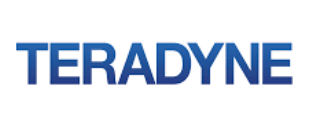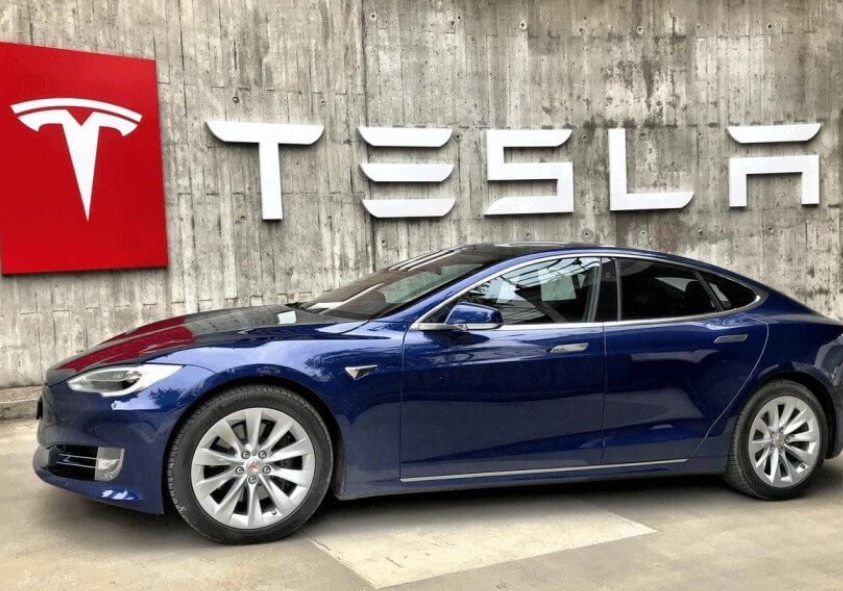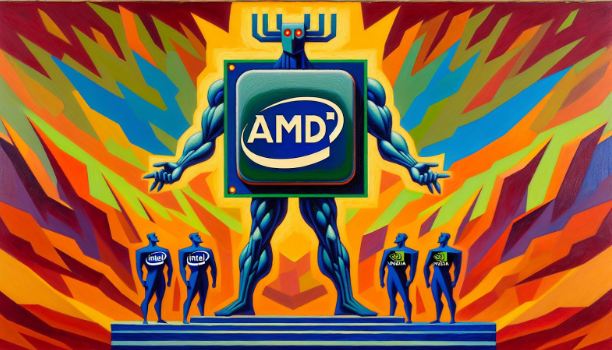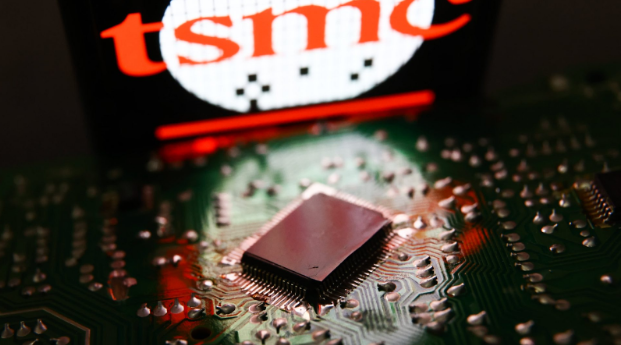
Category: Stocks


U.S. PMI Manufacturing unexpectedly slips into negative territory in April
April PMI Manufacturing Index: 49.9 vs. 52.0 consensus and 51.9 in March. The services PMI did, too, slip to 50.9 (vs. 52.0 expected) from 51.7 a month ago, though it remained in positive territory, with the index still above 50.
The composite PMI (flash estimate) came in at 50.9, down from 52.1 in the previous month, signaling business activity in the U.S. expanded at a slower pace during the month, in the wake of signs of weaker demand.
The group’s measure of employment slid 3.2 points to 48, reflecting shrinking services payrolls and slower growth at manufacturers. The composite index of prices received, meanwhile, pulled back from a 10-month high.
“The more challenging business environment prompted companies to cut payroll numbers at a rate not seen since the global financial crisis if the early pandemic lockdown months are excluded,” Williamson said.
The decline in the employment measure suggests companies see current capacity as sufficient to handle demand. Order backlogs remained in contraction territory during the month.
New business at service providers shrank for the first time since October, with some firms indicating higher borrowing costs and still-elevated prices were limiting demand.
The overall index for services activity decreased to the lowest level in five months, while the manufacturing PMI showed a slight contraction.
“Further pace may be lost in the coming months, as April saw inflows of new business fall for the first time in six months and firms’ future output expectations slipped to a five-month low amid heightened concern about the outlook,” said Chris Williamson, chief business economist at S&P Global Market Intelligence.

Tesla Non-GAAP EPS of $0.45 misses by $0.05,
Revenue of $21.31B misses by $950M
Reasons for the lower revenue: Reduced vehicle average selling price (ASP) YoY (excl. FX impact), an unfavorable product of the mix, and a decline in vehicle deliveries, partially due to the Model 3 update in the Fremont factory and Giga Berlin production disruptions.
A negative FX impact of $0.2B1 + growth in other parts of the business + higher FSD revenue recognition YoY due to the release of the Autopark feature in North America.
Beneath all that – Total revenues are lower by 9% YoY, and auto revenues are down 13% YoY. Energy and service revenues are keeping the flag flying still.
The stock is holding up at $154 – I guess it wasn’t worse than expected.

Globe Life (GL) $53
Category – Financial Services – subcategory- insurance
There is a short-selling operation going on by Orso Partners, alleging insurance fraud and of course the usual denials, and the short covering, which caused the 10% bounce premarket.
Historically, though higher mortality rates, mostly pandemic related, was one of the main reasons for the drop in 2022 income.
While the balance sheet is relatively OK, debt levels are elevated, which is not ideal in a high-interest rate environment.
There is a lot depending on declining or increasing mortality rates, and this could cause a lot of volatility in its stock.
That said, the company and analyst estimates are calling for 8% earnings growth in the next 3 years, and if the fraud claims are bogus and just short seller manipulation, the valuation is quite good. It has been a profitable company in the last 5-7 years.
But without enough information on the validity of Orso’s fraud claim it would be difficult to make a call.
Solventum Has No Revenue Growth Prospects

Solventum (SOLV) $67
The valuation is reasonable, the price to sales ratio is just 1.5x with a $12Bn Market Cap and $8.2Bn in sales.
Solid profit-making company with 25% operating margins and an EPS of $6.25, which gives it a decent multiple of 67/6.25 or just 11 – this is a discount to comparable health companies for sure.
The big problem is the lack of revenue growth, Solventum has been struggling at $8.2MBn in sales for the last three years, and even post spin-off is guiding to zero growth. That is also a bit difficult to swallow with all their segments – MedSurg, dental, health information and drinking water filtration, having 4-6% annual growth opportunities. There seems to be an execution problem.
Pre-spin off this was a well-entrenched 70 year business within 100,000 global customers, with presence in 75% of US hospitals and 50% international sales
3M has saddled it with $7.7Bn of debt so there is an interest burden of $400Mn which will dent profitability, till they reduce it in the next two three years.
The low valuation is definitely interesting, but we don’t want to walk into a value trap, where the stock just stagnates because of zero growth. Right now, there needs to be better execution or at least a strategic plan to start growing again.
It might make sense to buy a small quantity to take advantage of the low valuation and then add more with better growth visibility.

AMD has been mostly relegated to second tier status because of Nvidia’s massive leap in AI related data center revenue, which catapulted it from $27Bn in sales the previous year to $57Bn in 2023, this year and an estimated $90Bn in 2024.
However, AMD is a scrappy competitor and I have a lot of respect for Dr Lisa Su, who’s transformed this company from a commodity CPU/GPU semis supplier to game consoles and PC’s to a solid competitor in the data center segment. Most of Intel’s market share losses can be traced to AMD’s strengths!.
While Nvidia is likely to continue getting a lion’s share of AI GPU revenue for at least the next 2-3 years and in fact when AMD guided to about only $2Bn in AI/GPU revenue for 2024, during their last earnings call in Oct, I felt it was too little to buy AMD at that time. Besides the hardware, Nvidia’s moat is CUDA, its operating system, which really makes its GPU’s so much more powerful. I didn’t see AMD getting much traction on that account.
However, that was a mistake as it turned out to be a conservative estimate.
This is from UBS analysts:
Recent channel and customer checks confirmed their view that AMD has a firm demand commitment for more than 400,000 MI300A/X units for 2024, the analysts said. This is a number that is fairly consistent with where the analysts have seen demand since last summer but they have been wary of double ordering and unsure of supply.
The analysts added that after having gone back to several customers and suppliers, they are more confident that these units are real and AMD now has sufficient Chip-on-Wafer-on-Substrate capacity to do over 10% the volumes of Nvidia (NVDA).
*Even assuming a very conservative average selling price (which could be as high as $20,000 or more for some customers), this suggests $5B for data center GPU revenue is a pedestrian target for this year. Even this implies AMD exits the year at a *run-rate which could be close to $10B per year* with AMD still likely to grow GPU units quarter-over-quarter through much of 2025, the analysts added.
AMD has already moved up from $135 this month to $177 and it lost a little bit after Intel’s poor guidance. I’m going to start buying this slowly – knowing fully well that I’m late but I do believe in its long term story and the $10Bn run rate is an excellent number – If we believe in the AI story and the resulting surge in its building blocks, there there is no way only one company, Nvidia can supply to the entire market – AMD will get a decent foothold. I’m anticipating +$8 in earnings two years out, that should be priced at 30x or $240, which is still 36% higher than today’s price, nothing to be sneezed at.
Citigroup (NYSE:C) stock rose 1.8% in Friday premarket trading after the bank said it expects 2024 revenue to increase to about $80B-$81B from $78.5B in 2023, driven by gains in treasury and trade solutions, securities services, a rebound in investment banking and wealth, and lower partner payments in retail services. The revenue outlook excludes markets and divestitures.
Net interest income, excluding markets, is expected to decline modestly as global interest rates fall. Citi (C) expects mid-single-digit loan growth, driven by its card business and modest operating deposit growth, it said in its earnings slides.
Citibank’s adjusted earnings also beat expectations, but they expect only 2% revenue growth for 2024 and a modest decline in NII. Their allowance for losses was $397 Mn so no dire warnings there either.
Wells Fargo also beat adjusted earnings and revenue expectations but is more pessimistic for 2024. It expects net interest income to be about 7%-9% lower than 2023’s $52.4B level on lower interest rates, an expected decline in average loans, and further attrition in Consumer Banking and Lending deposits. Their provision for credit losses was $1.28B, higher than the other two but below expectations. *Q4 net loan charge-off, as a percentage of average total loans, of 0.53% vs. 0.36% in the prior quarter and 0.23% a year ago.*
Percentage of loans charged-off is a key measure to monitor; in Wells Fargo’s case it was double of the previous year’s – will need to keep a strict watch on this.

*Palantir: (PLTR) Buy, $16.50 One year target $20.*
*Invest 5 Years, 18-20% annual return.*
EPS Growth P/E PEG Sales Sales Growth P/S PS/G
0.30 29% 55 1.9 2.2 24% 16 67%
Palantir is a solid performer in the Data Analytics and AI space.
Their government business segment is a massive cash cow and a moat, because of long duration and sticky contracts and switching costs.
The commercial segment is growing much faster at 50%, and will be its growth engine, with the help of its Artificial Intelligence Platform (AIP), which tripled the number of users in the past quarter, with over 300 organizations using the new product in the last 5 months.
The stock is expensive especially after doubling last year but can be bought in installments and declines. I own some with an average cost of $15.
CPI Report: Inflation was slightly higher than expected.
Taiwan Semiconductor Manufacturing(TSM) Buy, $100 One year target $120.
Invest 5 Years, 15 % annual return. P/E 20, 3-5 year EPS growth 18-20%.
The Semiconductor foundry (manufacturing) leader by far with about 50% market share has large and deep moats in new processes, scale and costs. The semiconductor industry would collapse without it – it would take years for Global Foundries, Intel, Samsung, et al to even come close to catching up. Consider that TSM is spending up to $40Bn to set up a new foundry in Arizona, and it’s having trouble finding enough qualified people for its plant.
Revenue growth of 12-14% and earnings growth of 18-20% for the next three years augur well for the company. Normally TSM would be priced at over 40X earnings and closer to 10x sales, about twice the current price. Unfortunately, it being located in Taiwan and with China’s open design on it – multiples will always stay lower because of these geopolitical tensions. Still, the stock has rewarded investors well in the past with steady appreciation in the mid teens. It’s a must have for the portfolio specially for long term steady growth.
Palantir: (PLTR) Buy, $16.50 One year target $280.
Invest 5 Years, 16-20% annual return. P/E 34, 3-5 year EPS growth 14-16%.
CPI Report: Inflation was slightly higher than expected.
December Consumer Price Index: +0.3% M/M vs. +0.2% expected and +0.1% prior.
+3.4% Year on Year vs. 3.2% expected and +3.1% prior month
Core CPI, which excludes food and energy: +0.3% M/M vs. +0.2% expected and +0.3% prior. +3.9% Year on Year vs. 3.8% expected and +4.0% prior.
Stock Futures are flat as is the 10 year Treasury yield at 4.02%

Make My Trip (MMYT) $88
What’s to like:
Secular growth in Indian tourism. That’s likely to last several years, less cyclical.
High awareness of brands.
20% Three Year Forward Rev Growth consensus estimates
Turned the corner – first year of Operating Profits of $56Mn on $782Mn in revenue or 7% operating profit margins and $125Mn operating cash or 16% cash flow margin.
Management emphasized profitability from the entire industry, which should curtail some of the undercutting…Online travel booking can be a commodity, so this will help.
Risks and challenges.
Cyclicality – From 2015 to to 2018 (March Y/E) Make My Trip grew revenue from $295Mn to $658Mn, then drop 2 years in a row to $475Mn by March 2020 – Pre covid there was a slowdown in travel. Post Covid it has recovered strongly to $792Mn in revenue last year.
Market returns were commensurate with this performance – the stocks best performance was in the past 12 months returning 183%, the vast majority of the 219% of the last 10 years. Simply, the market has discounted some the 20% growth of the next 3 years.
Overall revenue growth from 2015-2024 was 10%, more like the industry average, and 20% forward growth will put it in a different league.
Valuation: 10X sales with 20% growth, it’s not a profit story yet. That’s a P/S growth ratio of 0.5, ideally, I like to get in below 0.3 for a better margin of safety, unless the cash flow or operating profit is growing very strongly.
It’s a good story, well managed, strong branding, market leadership and lots of growth ahead – valuation is a bit stretched because of secular growth Indian travel story 2X its normal multiple. Buying on declines and averaging it would be better.



